|
Steve
Khan's
lead
sheet:
"Zancudoville"(Steve Khan)
"Zancudoville," just as it was for "Los Gaiteros," was originally composed for, what would have been, my third CD with the Caribbean Jazz Project which, again, featured Dave Samuels and Dave Valentín. In all, I had written 4 new tunes for the group, and 2 of them, "El Faquir" and "Face Value" were finally recorded in 2007 for my "BORROWED TIME" CD. With the Latin feeling being a part of each and every tune on "PARTING SHOT," I knew that this would be my one and only chance to interpret this piece in my own way. Because of the presence of both vibes and flute in the CJP, I had written a melody in a completely different style. So, for this recording, I put that [A] section melody aside, and wrote something much more guitar-oriented, and more blues-oriented.
The main mood and attitude is set by a 'groove' and 'feel' that I had been exploring at home on my Martin MC-28 steel-string acoustic, and eventually, I brought it in to Rob Mounsey to see what we could do with it around the time, when we were assembling music for "YOU ARE HERE" in 1998. But, after some reflection, maybe I have the time-frame all wrong, and I brought this fragment to Rob when we might have been considering doing a 3rd CD together? I do remember this, on the cassette which I had carefully saved and stored away safely, it was labeled as: "Swamp Theme"! Anyway, that original jam/demo helped to form the basis of what you now hear.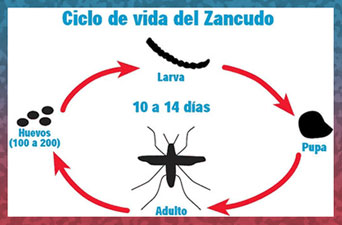 When I composed the original version of this tune, I made a demo in Caracas, Venezuela with the help of my dear friend, and master musician, Rafael Greco. We had such a great time doing the demos of the 4 tunes for the CJP - and we laughed like crazy as we inserted our own fantasy timbal fills in various spots. Not surprisingly, none of those fills were played on the final recorded performance as you now hear it. When I composed the original version of this tune, I made a demo in Caracas, Venezuela with the help of my dear friend, and master musician, Rafael Greco. We had such a great time doing the demos of the 4 tunes for the CJP - and we laughed like crazy as we inserted our own fantasy timbal fills in various spots. Not surprisingly, none of those fills were played on the final recorded performance as you now hear it.
Firstly, there is no such place as "Zancudoville" - I did not even know what a "zancudo" was until I arrived in Caracas, Venezuela in 1999. After nearly being eaten alive, I learned that a zancudo is no more, no less than a mosquito. In truth, in my view, the areas of Caracas closest to its guardian landmark, the gorgeous mountain, known as "El Ávila" are places with high zancudo populations. For me, the only way to save myself was with a long-sleeve shirt or a jacket, and when trying to sleep, having a huge supply of candles that are scented to keep those damn things away from me!!! Otherwise, I might as well have had a sign across my forehead that read: "OPEN FOR LUNCH."
During the preparation phase of this recording, I was asked if I had any tunes laying around that might be suitable for guitarist Bernie Williams, and so, I sent him the original demo for "Zancudoville." When I listened to it again, I said to myself: "Steve, you know, this tune is really too good to not record it yourself, and this is going to be your best chance to do it right." So, armed with the new [A] melody, I decided that the best way to record the tune, and to be able to play it live with the right feeling and atmosphere, would be to pre-record my acoustic guitar, which is essential to the feel and attitude, alongside Rob's beautiful Rhodes-esque sound. We did that, leaving lots of room for soloing live. The final touch was to play the güiro part myself, always a thrilling moment for me.
During the rehearsals, I spoke with Manolo Badrena about the kind of atmosphere that I hoped that he could create for the piece. And, as you can hear, he did just that adding lots of swampy, jungle, mosquito-infested sounds. However, there was more, and we will get that part of the story a little later.
While assembling the music for this recording, of course, I knew that somewhere on some of the songs, Manolo would be singing the various vocalese sections. But, my other dream or fantasy for the recording was to see if I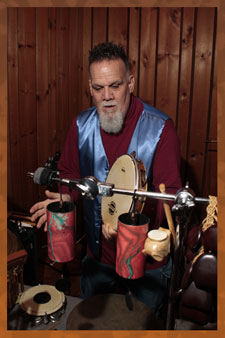 could somehow get Gracinha Leporace, Sergio Méndes' wife and the main voice on all of his recordings, to sing on some of the pieces. She is capable of so much more than just the usual breathy singing style associated with most Brazilian female singers. And so, I tried with all my powers of persuasion, and begging through my good friend Mike Shapiro, who plays drums with Sergio, to see if Gracinha would be willing to sing on something. In the end, all my efforts failed. Monstrous bummer!!! could somehow get Gracinha Leporace, Sergio Méndes' wife and the main voice on all of his recordings, to sing on some of the pieces. She is capable of so much more than just the usual breathy singing style associated with most Brazilian female singers. And so, I tried with all my powers of persuasion, and begging through my good friend Mike Shapiro, who plays drums with Sergio, to see if Gracinha would be willing to sing on something. In the end, all my efforts failed. Monstrous bummer!!!
As the process of making demos for all the songs began, and I had enlisted the help of Rob Mounsey to do them for me - I knew that I had to have some scratch vocals, so that Manolo could study and learn these vocal sections. One day, I went over to engineer James Farber's apartment to play him some of the demos. He wanted to hear the scope of the music so that he could conceptualize the studio set-up, and all the mics that he would need to request from Avatar Studios. As I played "Zancudoville" for him, I just sang along with the [B] section when it arrived. I thought nothing of it at that moment. But, after hearing me sing it, James asked in a most complimentary fashion, "Are you going to sing that yourself?" I responded by saying, "Of course, not! Manolo will eventually do it."
Sometime later, I decided to just add my voice to the demo, so that I could help Manolo learn it. At that time, I was bartering guitar lessons for Pro-Tools lessons, and I asked my student, my teacher, if he could bring a microphone so that we could record my voice for those sections. He was very gracious about it, and brought a mic. I sat next to my computer, and sang the parts. Later in this process, when Rob Mounsey heard my "scratch vocal" track on the demo, he commented, "This sounds perfectly great to me, you sound like Kenny Rankin!!!" Well, how bad could that be? I couldn't believe it!!!
But, I was still convinced that Manolo should do the vocal on this tune. And so, on December 15th, when Manolo arrived at Rob's studio to sing his vocals for both "María Mulambo" and "Just Deserts," I had planned that he would sing "Zancudoville" too. But, the final endorsement came from Manolo himself, when he told Rob and me that he felt that my vocal was really great, and that it would be crazy for him to try to replace it. He swore to me that he was not just being lazy too! So, I just decided to re-sing it myself, and that is what you now hear.
The electric guitar sound that you hear on this tune is one that I haven't really used on a recording of mine in ages, probably not since the tune "Casa Loco." That was 27 yrs. ago. Each time that I recreate this sound, I often wonder to myself just WHY I don't use it more often. I have no good answer for that. Though I share everything about my gear at the EQUIPMENT page, I will briefly describe what I am doing. Firstly, for this sound, it's the only type of sound that I play with Ibanez DCF-10, my chorus sound, shut-off, and that's crucial. So, I am still coming out of the Ibanez Pedal Board using the Tube Screamer TS-10 with the settings as follows:
LEVEL: 2 o'clock
DRIVE: 9 o'clock
TONE: Shut off completely!
From there, the ping-ponging digital delays are still in use, and the board goes out into my stereo Ernie Ball volume pedal, and finally out to my Walter Woods stereo amp. The amp feeds out to my two(2) Marshall #1966A 2x12" cabinets which have Electro-Voice speakers in them. Very durable speakers, but too damn heavy, I wish that I had just kept the Celestion speakers! I guess it should be noted that, in the room, I am playing very loud too. Loud to the point where James Farber can't come in the room without having to cover his ears! From the guitar perspective, here's what I do: I put the pick-up selector switch in the middle position, so that both pick-ups are on. Then I have the bridge pick-up set with the Volume control knob on '10' and the Tone control knob set at about '8.' The 'trick' here is that the Volume control knob for the neck pick-up is only set to '5.'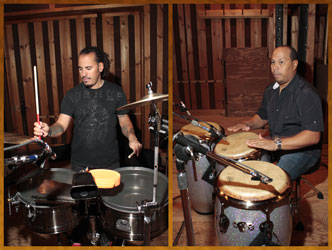 I owe this setting, and its sound, to my good friend, Carlos Rios! This particular setting gives you a really nice amount of grit and sustain in a most bluesy way, without going too far down the road of a heavier Fusion-oriented sound. Some players call this a "crunchy" sound. That's really all there is to it. I owe this setting, and its sound, to my good friend, Carlos Rios! This particular setting gives you a really nice amount of grit and sustain in a most bluesy way, without going too far down the road of a heavier Fusion-oriented sound. Some players call this a "crunchy" sound. That's really all there is to it.
The cha-cha-cha is probably the most easily accessible feel for non-Latinos to grasp, no doubt because of the insistent quarter-note pulse, which is usually identified with the cha-cha bell coming from the timbal. "Zancudoville" marks the 3rd and final cha-cha that appears on "PARTING SHOT." Normally on most Salsa or Latin Jazz recordings, you will only find one cha-cha-cha, that's it!!! Working with both Marc Quiñones and Bobby Allende brought something personal and special to each of the tunes, but they certainly provide one of the funkiest cha-cha tumbaos one could imagine. What I love so much about Bobby's approach to the conga and the tumbao is that, to me, he is all about making the piece groove. So many of today's great super-virtuosos on the conga are, at times, too concerned with their virtuosity, and not laying down a big tumbao. When one listens carefully to Bobby's contributions, his creativity is present everywhere. As I mentioned, when writing about both "Change Agent" and "Influence Peddler," most people readily admit that Marc has the best avanico in Latin music, and during "Zancudoville" he has ample opportunity to display it, and at length, because of all the breaks. His playing on this tune is much more groove oriented throughout, but there are a couple of classic moments during the Fade, the [B2] section found on Pg. 5. I love the fill he plays that begins at about 6:55! Marc remains one of my favorite musicians, on any instrument, and in any style!
Though the Fender Rhodes was a sound that did play an important role in some of the classic Salsa from '70s, it certainly was replaced by a return to the acoustic piano, or to similar sounds, samples found in most polyphonic synthesizers. But, in most contemporary Salsa the electric keyboard sounds are usually pretty harsh and abrasive, perhaps to cut through all the percussion and brass? For me, I love the sound of a Rhodes, even though, no one actually plays a real Fender Rhodes any longer. A superbly trained musician, like Rob Mounsey, usually prefers to create his sounds, sometimes he refers to these creations as a nice made-to-order sandwich. That's exactly what he did for "Zancudoville." On our original demo for this tune, Rob had the greatest sound, but, in the move from one studio location in New York to a new one, and the constant upgrades to various systems, that sound was lost somewhere.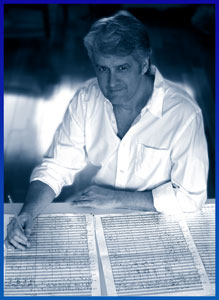 But, creating just the right sound, though important, it is the feeling that Rob plays with that captures something that is not always so easy to find. As an accompanist, as a colorist, Rob really has few equals. The role of the keyboard on this tune requires a sense of romantic sustain, in other words, liberal usage of the sustain pedal, a love for R&B and the language of the blues, and of course, a little Clare Fischer thrown-in here and there for good measure. Rob brings all these qualities to this performance, and so much more. But, creating just the right sound, though important, it is the feeling that Rob plays with that captures something that is not always so easy to find. As an accompanist, as a colorist, Rob really has few equals. The role of the keyboard on this tune requires a sense of romantic sustain, in other words, liberal usage of the sustain pedal, a love for R&B and the language of the blues, and of course, a little Clare Fischer thrown-in here and there for good measure. Rob brings all these qualities to this performance, and so much more.
One of the last arranging touches that Rob and I added to this tune was the sound of light orchestra bells that mark certain melodic passages during the [B2] and [B3] sections. When I asked Rob about adding this sound, he immediately remembered that this particular sound had been one of the specialties of the late, great Roland D-50. But, sadly for us, it was not in Rob's vast library of keyboard sounds. So, what was the solution? Simple, at least for him, Rob just created the sound from scratch. Though it is a most simple touch, I love what this small orchestral device adds. And, it goes without saying that its final shaping comes from the very sensitive ears of engineer James Farber, who simply put it in just the right perspective.
Just so that you are clear about it, the spoken passages in Spanish during "Zancudoville" those were all performed by Manolo. During my years in Venezuela, in Caracas with one of the great loves of my life, actress Caridad Canelón, between 1999-2002, those damn zancudos were eating me alive. They drove me crazy! After my first stay there, I returned armed with defenses. As window screens are pretty uncommon there, I bought a couple of expandable window screens with me from New York to keep the zancudos out of the bedroom. This helped a little bit, very little! Then Caridad and I went hunting around all over the city to find the distributor for the U.S. product of a mosquito repellent scented candle. I think that I actually bought two(2) full cases of them. I guess I saw a long future there? Of course, we tried incense too, but that was pretty much useless. Finally, I had a fan blowing on me full blast all night in hopes that the draft would keep them away. In the end, I would have to say that the scented candles were the best solution. I know that everyone in Caridad's household, including her two wonderful children, Luis Daniel and Angélica, found this all to be immensely amusing. I remember those years so well, and with great affection.
So, in the end, for the zancudos, those little bastards, during Manolo's vocal overdub day on December 15th, 2010, I asked him to please use his fantastic speaking voice to whisper to the zancudos, basically telling them to: "leave me alone, don't bother me!."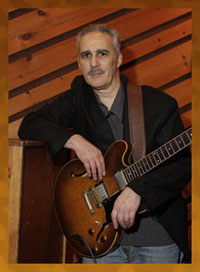 Or, like the one that you might see flying around the room, or resting peacefully on the wall, "I see you, I see you!" Manolo let them know that they are "very annoying!" And finally, in an act of useless defiance, "catch me if you can!" Each time I hear one of those spoken passages go by, it just brings a huge smile to my face. But, for anyone who has wondered, the only singing voice that you hear on the tune "Zancudoville" is mine!!! Or, like the one that you might see flying around the room, or resting peacefully on the wall, "I see you, I see you!" Manolo let them know that they are "very annoying!" And finally, in an act of useless defiance, "catch me if you can!" Each time I hear one of those spoken passages go by, it just brings a huge smile to my face. But, for anyone who has wondered, the only singing voice that you hear on the tune "Zancudoville" is mine!!!
If you look at the information provided on the tray card, the back of the CD jewel case, you might notice that it only says, Steve Khan: Guitar. Yet, inside the CD booklet, in addition to that credit, it states: Voice & Güiro [9]. The reason that I decided to do it this way was because I did not want to create even the smallest distraction from the music. I did not want people, the DJs, nor the music writers, to think that I was suddenly singing for some commercial purpose. This has proved to be very effective, because virtually no one even knows that it was me singing the vocalese sections. I think that this was for the best. Another big consideration was where, in the sequence of songs, should I place "Zancudoville," because everyone was reacting so favorably to it? The main reason that I felt that it had to appear later in the sequence was two-fold: [1] It is the only tune on which I used that kind of singing guitar sound; and [2] It was also the only tune on the CD where a keyboard, a Rhodes sound, is present. If someone heard this tune in the first, second or third slots, I believe that it would have been very misleading for them. And this is why the tune ended-up as Track [9]. These are important considerations for any artist, young or old. Beyond all that, in my heart, I felt that having tracks [1]-[4] be: "Chronology"; "Los Gaiteros"; "Change Agent"; and "Bye-ya" presented the exact kind of feeling and attitude that I hoped to convey. A consistency of sound, along with four distinct Latin rhythmic feels, I could not ask for more than that!
So now, with both "Zancudoville" and "Los Gaiteros" finally having been recorded, it puts to rest a certain period of my musical life, and in the best possible way. I guess it was worth the wait.
Addendum: Though it might not be obvious to most, "Zancudoville" is actually my tribute to the great, great band, Little Feat and specifically to their remarkable instrumental piece,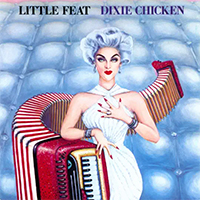 "Lafayette Railroad" which appeared on their 1973 super album "DIXIE CHICKEN." Written by band members Lowell George (Slide Guitar) and Bill Payne (Wurlitzer Elec. Piano) this song features arguably the greatest slide guitar playing ever by Lowell. Expressive and soulful beyond belief - and, WHAT a sound!!! He makes that Fender Strat sing out a melody that was just made for the slide guitar. "Lafayette Railroad" which appeared on their 1973 super album "DIXIE CHICKEN." Written by band members Lowell George (Slide Guitar) and Bill Payne (Wurlitzer Elec. Piano) this song features arguably the greatest slide guitar playing ever by Lowell. Expressive and soulful beyond belief - and, WHAT a sound!!! He makes that Fender Strat sing out a melody that was just made for the slide guitar.
On that album, the rest of the band featured: Paul Barrere (Guitar); Kenny Gradney (El. Bass); Richie Hayward (Drums) and Sam Clayton Conga. For Barrere and Gradney, this was their 1st album with the group! Richie Hayward's performance here is just too great. All of these great players were keys to creating a catalog of music that endures to this day. All cut way too short by the tragic loss of Lowell George. In addition to the core group, background vocals featured two of my favorite people and singers: Bonnie Raitt and Stephanie Spruill. If it needs to be said, Bonnie Raitt is really the only player that I have heard who seemed to grasp and carry-on with Lowell George's slide sound and feel!
No matter how hard I tried, "Zancudoville" never felt quite slow enough for me, when compared to Little Feat's "Lafayette Railroad" so I just had to let go of that dream. Still and all, my tune is probably at about the lowest end of the tempo spectrum for a cha-cha-cha!!! For some of you, perhaps a precious few, I really do hope that this little anecdote enhances your enjoyment of this tune, which I have already celebrated here at this page. [Updated in December of 2024]
[Photos: Steve Khan; Manolo Badrena; and, Marc Quiñones & Bobby Allende
Photos by: Richard Laird @ Avatar Studio 'A' - November 6th, 2010
Photo: Rob Mounsey by Paul Mounsey]
|


 When I composed the original version of this tune, I made a demo in Caracas, Venezuela with the help of my dear friend, and master musician, Rafael Greco. We had such a great time doing the demos of the 4 tunes for the CJP - and we laughed like crazy as we inserted our own fantasy timbal fills in various spots. Not surprisingly, none of those fills were played on the final recorded performance as you now hear it.
When I composed the original version of this tune, I made a demo in Caracas, Venezuela with the help of my dear friend, and master musician, Rafael Greco. We had such a great time doing the demos of the 4 tunes for the CJP - and we laughed like crazy as we inserted our own fantasy timbal fills in various spots. Not surprisingly, none of those fills were played on the final recorded performance as you now hear it. could somehow get Gracinha Leporace, Sergio Méndes' wife and the main voice on all of his recordings, to sing on some of the pieces. She is capable of so much more than just the usual breathy singing style associated with most Brazilian female singers. And so, I tried with all my powers of persuasion, and begging through my good friend Mike Shapiro, who plays drums with Sergio, to see if Gracinha would be willing to sing on something. In the end, all my efforts failed. Monstrous bummer!!!
could somehow get Gracinha Leporace, Sergio Méndes' wife and the main voice on all of his recordings, to sing on some of the pieces. She is capable of so much more than just the usual breathy singing style associated with most Brazilian female singers. And so, I tried with all my powers of persuasion, and begging through my good friend Mike Shapiro, who plays drums with Sergio, to see if Gracinha would be willing to sing on something. In the end, all my efforts failed. Monstrous bummer!!!